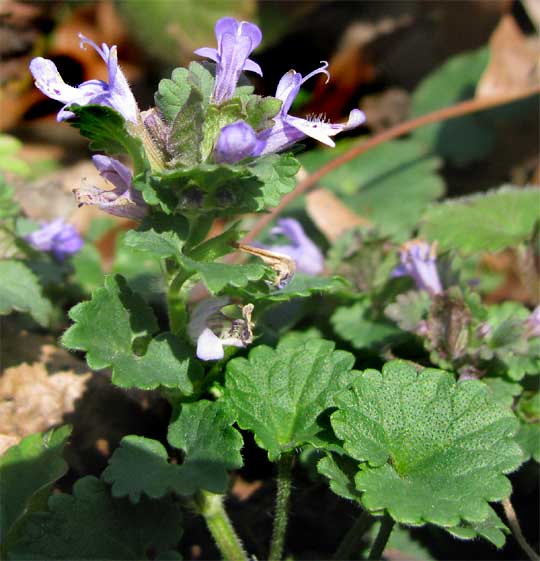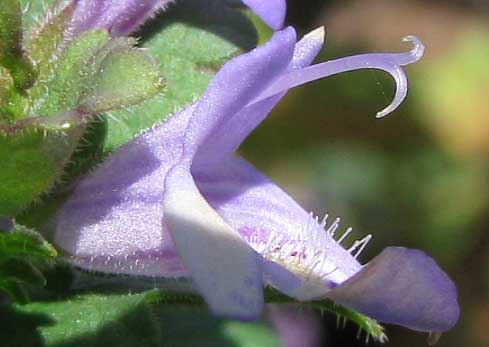Excerpts from Jim Conrad's
Naturalist Newsletter
from the Februrary 23, 2009 Newsletter, issued from the forest near Natchez, Mississippi; elevation ~400ft (120m), ~N31.47°, ~W91.29°:
GROUND-IVY FLOWERING

Above you see an abundant little creeping plant naturalized from Europe, Ground-Ivy or Creeping Charlie, GLECHOMA HEDERACEA. It's all over Karen's semi-shaded, rich- soiled backyard, so thick that it even dominates the grass. When you walk on it the crushed herbage emits an oily, musky odor that Karen says makes her sneeze; she calls it "Stinkyweed" but I rather like the odor.
I'm especially appreciating the plant right now because it's an early bloomer and I like seeing the plant's delicate little flowers, a close-up shown below:

In that picture you can see that the flower lacks the radial symmetry of most blossoms, displaying bilateral symmetry instead -- one side being a mirror image of the other. The corolla's lobes join at their bases to form a flaring cup. The wishbone-shaped item arching from the corolla's top is the two-lobed style, each recurving lobe bearing a stigmatic zone on the inner or upper side. Pollen grains germinate on the stigmatic zone, send their sex-germ-carrying pollen tubes down through the style to the deeply four-lobed ovary in the flower's bottom. Those deeply four-lobed ovaries are typical of the Mint Family, to which Ground-Ivy belongs.
In the last picture notice how the hairs arising on the lower corolla lip -- the pollinators' "landing platform" -- are knobby at their tops. Those knobs are glands. Some glandular hairs are sticky so that insects hesitate to pass through them, but I'd not expect such hairs to grow on a flower's "landing pad" where pollinators are wanted. I suspect the hair glands provide some kind of food meant to attract pollinators, but that's only a guess.
As often is the case with plants with smelly herbage, Ground-Ivy has been used medicinally. Earlier its main use was for coughs and chronic lung problems, but also for "purifying the blood," cleaning ulcers, and much more.